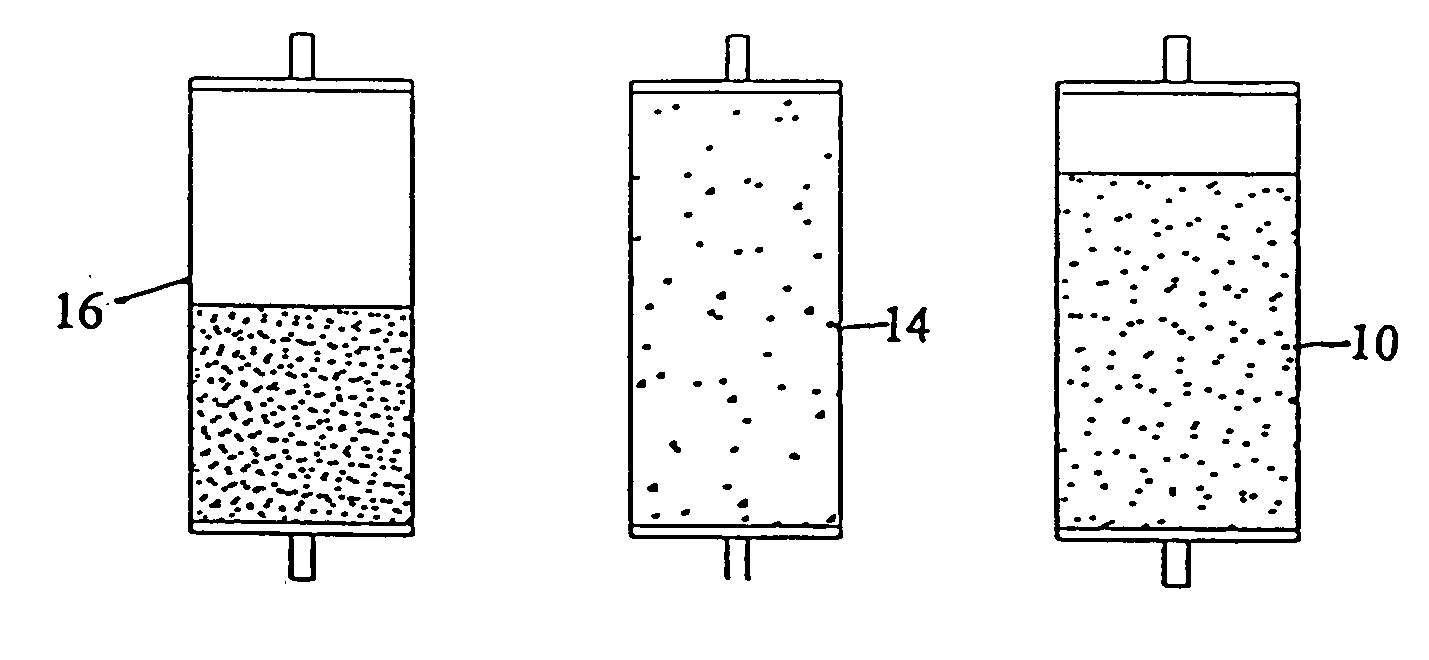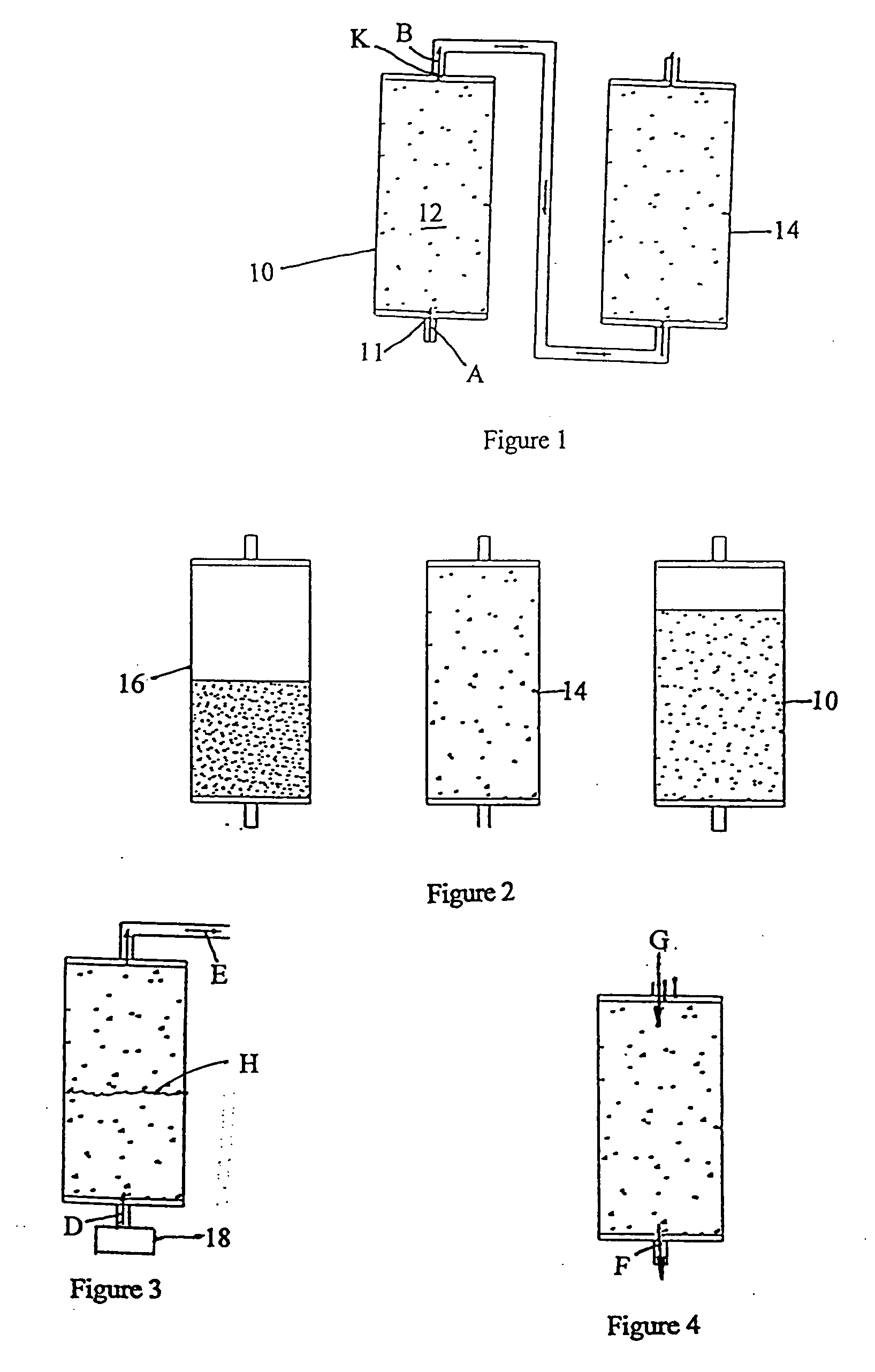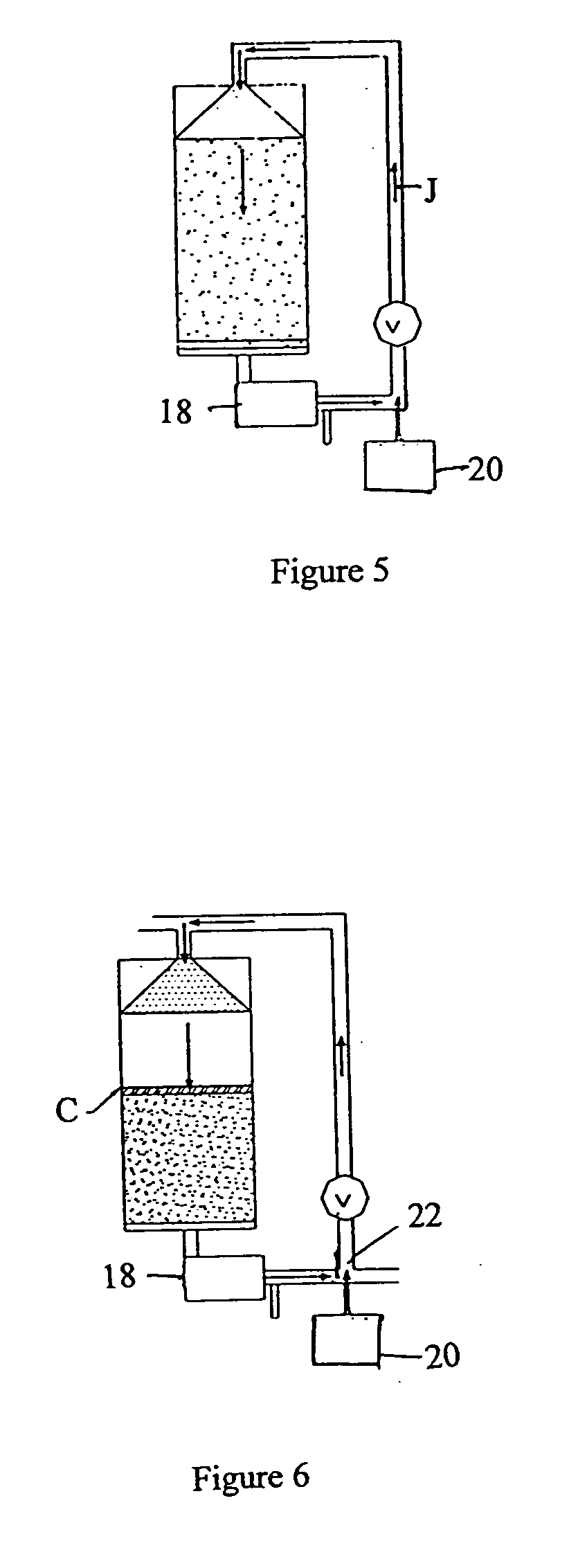Ion exchange process
a technology of ion exchange and process, applied in the direction of ion exchanger, water/sewage treatment by ion exchange, treatment water, etc., can solve the problems of high salt level, high protein and fat content of waste, and inability to direct discharge, etc., to achieve simple and cost-effective means
- Summary
- Abstract
- Description
- Claims
- Application Information
AI Technical Summary
Benefits of technology
Problems solved by technology
Method used
Image
Examples
example 1
[0048] A one liter exhausted water softening bed is regenerated in the follow manner. The bed is drained until 240 ml of liquid remains. The liquid is pumped through rock salt (116 gram sodium chloride) to produce a saturated brine. The brine is sprayed on the top of the bed. This is continued until all the salt has dissolved. The volume brine of will increase to 300 ml. The sodium exchanges for the calcium to produce a concentrated calcium chloride brine (37% by weight). If 600 ml is used to displaced the brine off the column, 19% brine is produced.
example 2
[0049] A one liter exhausted water softening bed is regenerated in the follow manner. The bed is drained until 100 ml liquid remains. The liquid is pumped through a mixing T fitting 22, FIG. 6 where concentrated hydrochloric acid (37%) to produce a dilute acid 1%. The dilute acid is sprayed on the top of the bed. This is continued until 200 ml has been added. The volume of resulting calcium chloride brine will increase to 300 ml. The hydrogen exchanges for the calcium to produce a concentrated calcium chloride brine (37% by weight). If 600 ml is used to displaced the brine off the column, 19% brine is produced.
[0050] Even less liquid can be used, but the degree of regeneration maybe reduced.
[0051] From what I have described it will be appreciated to those of skill in this art that I have invented an ion exchange process for treating waste water having caustic materials, comprising: [0052] a. providing a bed of cation exchange resin beads; [0053] b. introducing the waste water to t...
PUM
| Property | Measurement | Unit |
|---|---|---|
| volume | aaaaa | aaaaa |
| volumes | aaaaa | aaaaa |
| bed volumes | aaaaa | aaaaa |
Abstract
Description
Claims
Application Information
 Login to View More
Login to View More - R&D
- Intellectual Property
- Life Sciences
- Materials
- Tech Scout
- Unparalleled Data Quality
- Higher Quality Content
- 60% Fewer Hallucinations
Browse by: Latest US Patents, China's latest patents, Technical Efficacy Thesaurus, Application Domain, Technology Topic, Popular Technical Reports.
© 2025 PatSnap. All rights reserved.Legal|Privacy policy|Modern Slavery Act Transparency Statement|Sitemap|About US| Contact US: help@patsnap.com



